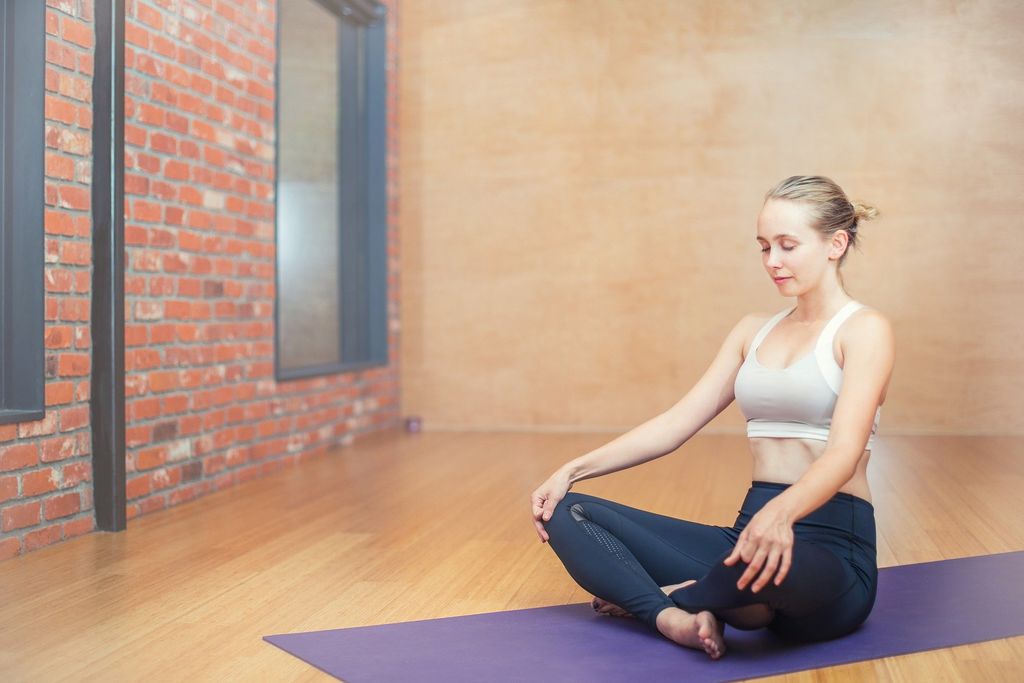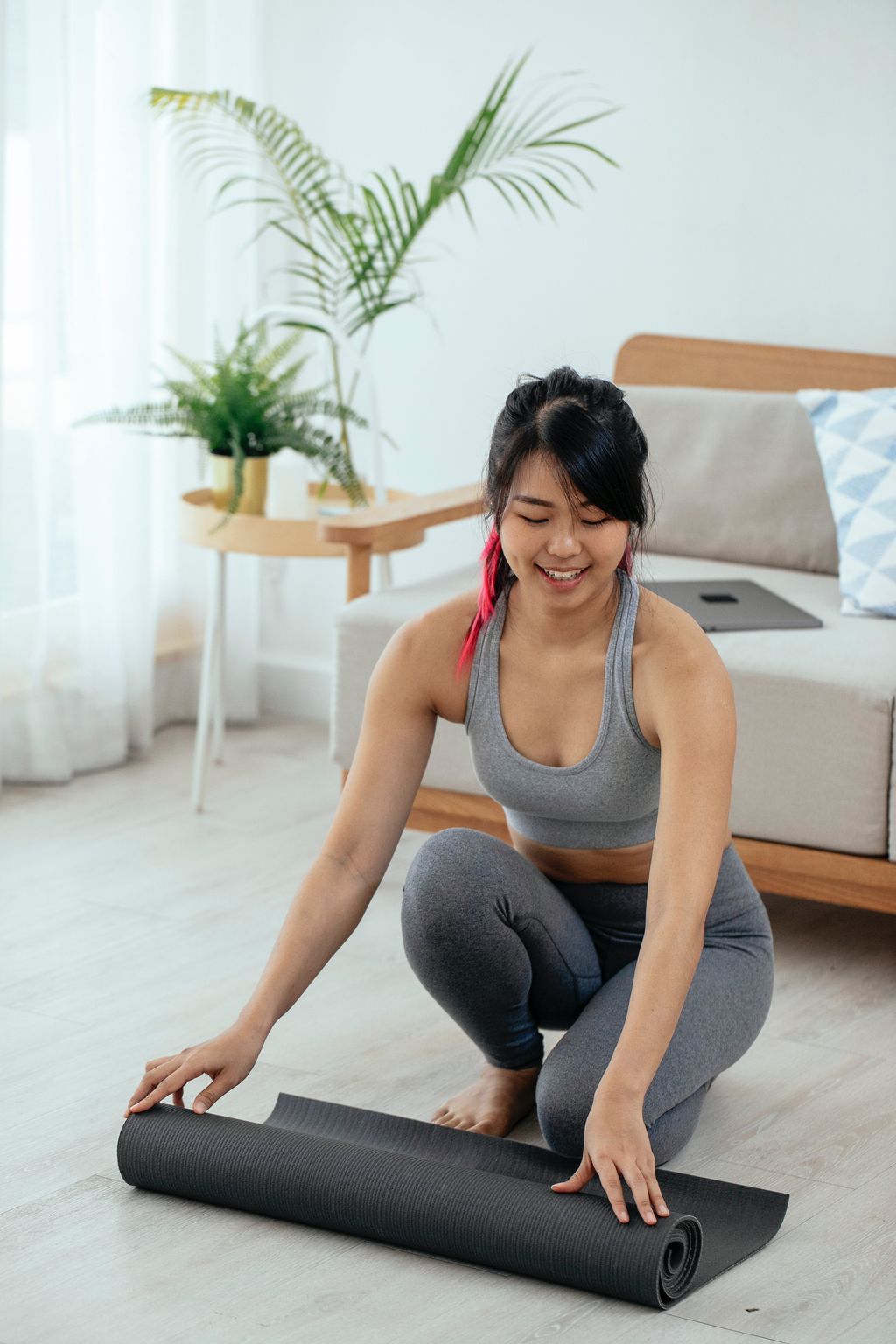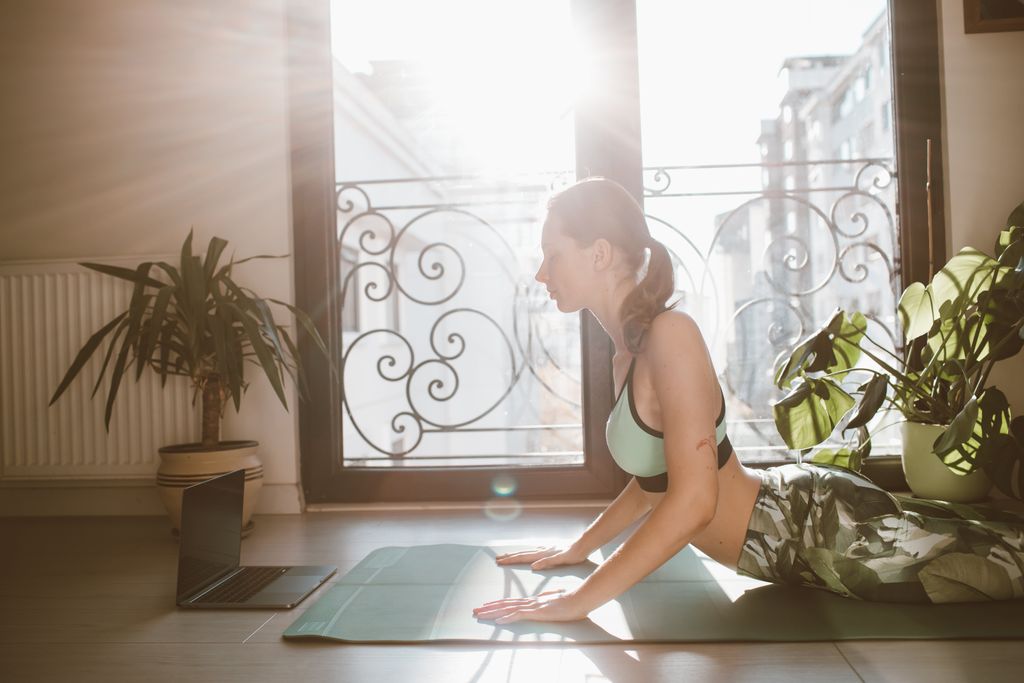
Understanding Different Yoga Mat Materials
When it comes to choosing a yoga mat, there are a variety of materials to consider. Each material has its own unique benefits and drawbacks. In this article, we will explore the different yoga mat materials, including natural rubber, PVC, cork, and TPE. By understanding the characteristics of each material, you can make an informed decision about which yoga mat is best for your practice.
Key Takeaways
- Natural rubber yoga mats are eco-friendly and provide excellent grip, but they may have a strong smell and require regular maintenance.
- PVC yoga mats are affordable and durable, but they are not eco-friendly and may contain harmful chemicals.
- Cork yoga mats are sustainable and antimicrobial, but they may be less cushioned and have a limited color range.
- TPE yoga mats are non-toxic and recyclable, but they may not provide as much grip as other materials.
- Consider your priorities, such as sustainability, grip, and cushioning, when choosing a yoga mat material.
Introduction to Yoga Mat Materials
Natural Rubber Yoga Mats
Natural rubber yoga mats are a popular choice among yogis due to their excellent grip and cushioning. Rubber is a versatile material that provides a stable and non-slip surface, allowing practitioners to hold poses with confidence. These mats are also known for their durability, making them a long-lasting investment for regular yoga practice.
One of the key advantages of natural rubber yoga mats is their eco-friendly nature. Made from sustainably harvested rubber trees, these mats are biodegradable and do not contribute to environmental pollution. Additionally, natural rubber is a renewable resource, making it a more sustainable choice compared to synthetic materials.
To maintain the longevity of your natural rubber yoga mat, it is important to clean it regularly. Use a mild soap and water solution to gently wipe the mat, avoiding harsh chemicals that can degrade the rubber. It is also recommended to air dry the mat after cleaning to prevent moisture buildup and potential mold growth.
In summary, natural rubber yoga mats offer excellent grip, durability, and eco-friendly properties. They are a great choice for yogis who prioritize sustainability and want a reliable mat for their practice.
PVC Yoga Mats
PVC yoga mats are a popular choice among yogis due to their affordability and durability. PVC stands for polyvinyl chloride, which is a synthetic material known for its flexibility and resistance to wear and tear.
One of the main advantages of PVC yoga mats is their non-slip surface, which provides excellent grip and stability during yoga poses. This is especially beneficial for practitioners who engage in more dynamic and challenging yoga styles.
However, it's important to note that PVC yoga mats are not the most environmentally friendly option. PVC is a type of plastic that is derived from fossil fuels and is not biodegradable. This means that when PVC yoga mats are disposed of, they can contribute to pollution and harm the environment.
If you're looking for a more sustainable alternative to PVC yoga mats, consider exploring other options such as natural rubber, cork, or TPE (thermoplastic elastomer) mats.
Cork Yoga Mats
Cork yoga mats are a popular choice among yogis due to their eco-friendly properties and durability. Made from the bark of cork oak trees, these mats are sustainable and renewable. Cork is a natural non-slip material, providing excellent grip during yoga practice. It is also antimicrobial, preventing the growth of bacteria and odor. Additionally, cork yoga mats are lightweight and portable, making them easy to carry to and from the studio. They are known for always laying flat and never sliding or bunching up, ensuring a stable and comfortable practice.
TPE Yoga Mats
TPE, or Thermoplastic Elastomer, is a popular material used in the production of yoga mats. It is a synthetic material that combines the properties of plastic and rubber. TPE yoga mats are known for their durability, flexibility, and non-slip surface. They provide excellent cushioning and support during yoga practice. TPE mats are also eco-friendly as they are free from PVC, latex, and other harmful chemicals.
Pros and Cons of Natural Rubber Yoga Mats
Benefits of Natural Rubber Yoga Mats
Natural rubber yoga mats offer several benefits that make them a popular choice among yoga practitioners. One of the key advantages of natural rubber mats is their excellent grip. The natural rubber material provides a sticky surface that helps prevent slipping and sliding during yoga poses. This is especially beneficial for those who practice hot yoga or engage in vigorous and dynamic movements. Additionally, natural rubber mats are known for their durability and longevity. They can withstand regular use and maintain their shape and quality over time. This makes them a cost-effective option for long-term use.
Drawbacks of Natural Rubber Yoga Mats
While natural rubber yoga mats have many benefits, there are also some drawbacks to consider. One of the main concerns is the potential for allergic reactions. Some individuals may be sensitive or allergic to natural rubber, which can cause skin irritation or respiratory issues. It's important to test a small area of the mat before using it extensively.
Another drawback is the odor that can be present in natural rubber mats. Natural rubber has a distinct smell that some people find unpleasant. However, this odor usually dissipates over time with proper airing and use.
Additionally, natural rubber mats may not be as durable as other materials. They can wear down more quickly, especially with frequent use or intense workouts. It's important to take proper care of the mat to extend its lifespan.
Lastly, natural rubber mats can be more expensive compared to other options. The manufacturing process and the use of high-quality materials contribute to the higher price point. However, many people find that the benefits of natural rubber outweigh the cost.
Advantages and Disadvantages of PVC Yoga Mats
Advantages of PVC Yoga Mats
PVC yoga mats offer several advantages that make them a popular choice among yoga practitioners. One of the key benefits of PVC mats is their durability. They are designed to withstand regular use and can last for a long time without showing signs of wear and tear. This makes them a cost-effective option for those who practice yoga frequently.
Another advantage of PVC mats is their excellent grip. The material provides a non-slip surface, which helps to prevent injuries and allows for a stable practice. Whether you're performing challenging poses or holding static positions, the grip provided by PVC mats can enhance your overall yoga experience.
Additionally, PVC mats are easy to clean and maintain. They can be wiped down with a damp cloth or sprayed with a mild cleaning solution to remove dirt and sweat. This makes them hygienic and suitable for use in shared yoga spaces.
In summary, PVC yoga mats offer durability, excellent grip, and easy maintenance, making them a practical choice for yoga practitioners.
Disadvantages of PVC Yoga Mats
While PVC yoga mats have many advantages, there are also some drawbacks to consider. One of the main disadvantages is that PVC is not an eco-friendly material. It is made from synthetic chemicals and is not biodegradable, which means it can take hundreds of years to break down in a landfill. Additionally, PVC mats may emit harmful chemicals, such as phthalates, which can be harmful to both the environment and human health. It is important to note that not all PVC mats contain phthalates, but it is something to be aware of when choosing a yoga mat.
Benefits of Cork Yoga Mats
Eco-friendly Properties of Cork Yoga Mats
Cork yoga mats are known for their eco-friendly properties. Cork is a sustainable and renewable material that is harvested from the bark of cork oak trees. The harvesting process does not harm the trees, making it an environmentally friendly choice. Additionally, cork is biodegradable, which means that it will naturally break down over time without causing harm to the environment. This makes cork yoga mats a great option for those who are conscious about their ecological footprint.
Durability of Cork Yoga Mats
Cork yoga mats are known for their exceptional durability. The natural properties of cork make it resistant to wear and tear, ensuring that the mat will last for a long time. Cork is a highly resilient material that can withstand heavy use without losing its shape or integrity.
Additionally, cork yoga mats have a self-healing property, which means that small punctures or scratches on the surface will gradually close up over time. This makes cork mats less prone to damage and extends their lifespan.
If you're looking for a yoga mat that can withstand frequent use and maintain its quality over time, a cork yoga mat is an excellent choice.
TPE Yoga Mats: A Sustainable Alternative
What is TPE?
TPE stands for Thermoplastic Polyester Elastomer. It is a versatile class of materials that combines the properties of thermoplastics and elastomers. TPE is commonly used in various industries due to its unique characteristics. Unlike traditional rubber, TPE can be melted and re-molded multiple times without losing its properties. This makes it a sustainable and cost-effective option for manufacturing different products.
Environmental Benefits of TPE Yoga Mats
TPE, or Thermoplastic Elastomer, is a synthetic material that is becoming increasingly popular in the yoga mat industry. It is known for its eco-friendly properties and sustainability. TPE yoga mats are made from a blend of different materials, including recycled rubber and plastic. This makes them a great choice for environmentally conscious yogis.
TPE Yoga Mats: A Sustainable Alternative. Yoga is not just a physical exercise, it's a way of life. And at Yune Yoga, we believe in providing you with the best tools to enhance your yoga practice. That's why we offer TPE yoga mats, a sustainable alternative to traditional mats. Made from eco-friendly materials, our TPE mats are not only good for the environment, but they also provide excellent grip and support during your yoga sessions. Whether you're a beginner or an experienced yogi, our TPE mats are designed to meet your needs. Visit our website today to explore our wide range of yoga mats and fitness and health accessories. Elevate your yoga practice with Yune Yoga!
Conclusion
In conclusion, understanding the different materials used in yoga mats is essential for practitioners to make an informed decision. Each material has its own unique characteristics and benefits, catering to different needs and preferences. Whether it's the eco-friendly and natural rubber mats, the durable and supportive PVC mats, or the lightweight and easy-to-clean TPE mats, there is a mat out there for everyone. By considering factors such as grip, cushioning, durability, and environmental impact, individuals can choose a yoga mat that suits their practice and enhances their overall experience. So, whether you're a beginner or an experienced yogi, take the time to explore the various yoga mat materials available and find the one that resonates with you and supports your journey towards physical and mental well-being.
Frequently Asked Questions
Are natural rubber yoga mats eco-friendly?
Yes, natural rubber yoga mats are eco-friendly as they are made from sustainable and biodegradable materials.
Can PVC yoga mats cause any health issues?
PVC yoga mats can potentially release harmful chemicals, such as phthalates, which may cause health issues with prolonged exposure.
Do cork yoga mats provide good grip?
Yes, cork yoga mats offer excellent grip, even when wet, making them suitable for various yoga poses.
Are TPE yoga mats durable?
TPE yoga mats are known for their durability and can withstand regular use without wearing out quickly.
Can natural rubber yoga mats have a strong odor?
Some natural rubber yoga mats may have a strong odor initially, but it usually dissipates over time with proper airing.
Are cork yoga mats suitable for hot yoga?
Yes, cork yoga mats are suitable for hot yoga as they have natural antimicrobial properties and provide a non-slip surface even when sweaty.


